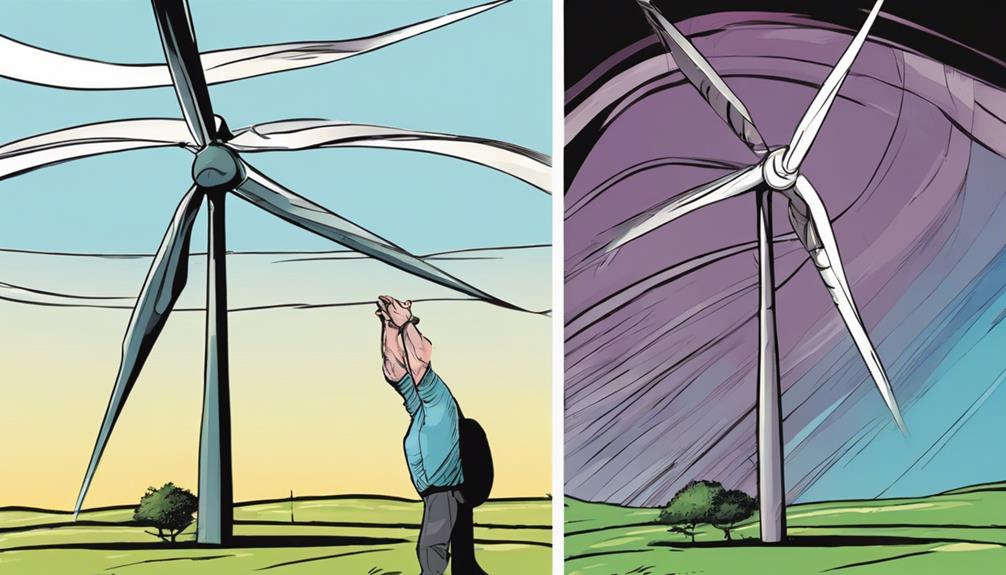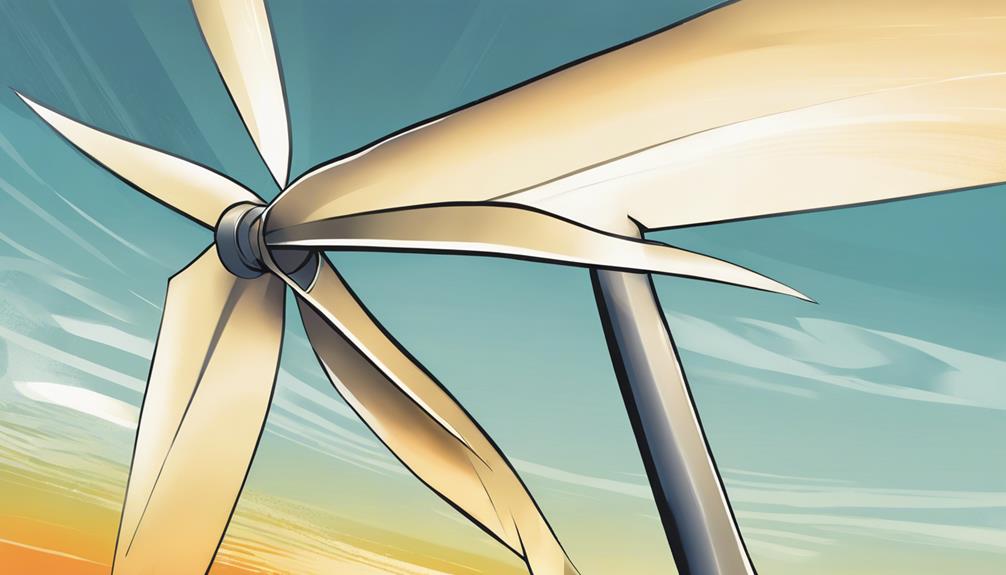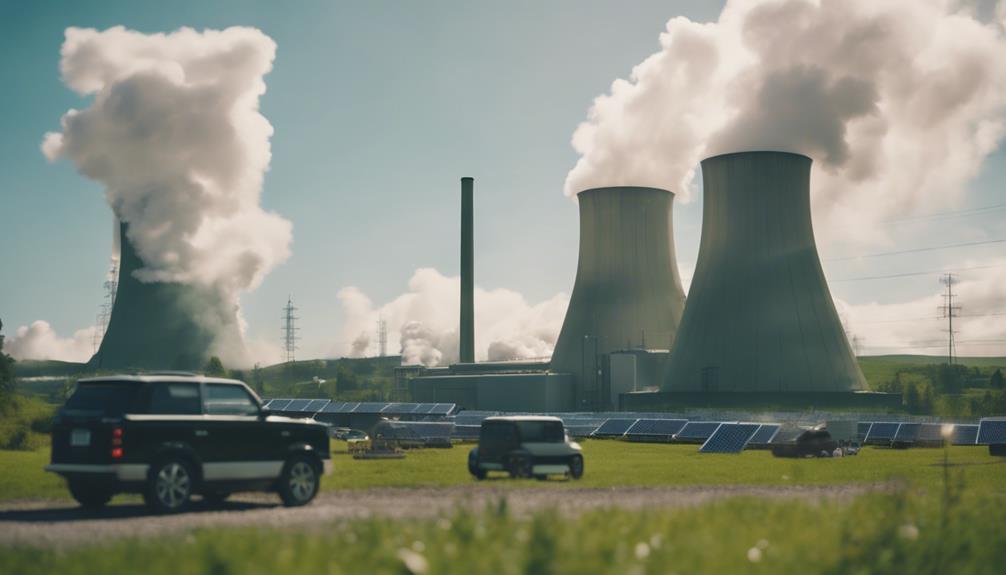Wind turbine blades typically weigh between 35 to 65 tons, with larger ones edging towards the heavier end of the scale. The weight plays a vital role in balance, stability, and power generation. As you consider this weight range, remember it impacts efficiency and durability. The significance of blade weight also influences transportation logistics and installation challenges. Each factor contributes to the overall performance and cost-effectiveness of wind turbine systems. Now that you have an idea of the weight range, deeper insights into its impact and importance await.
Key Takeaways
- Wind turbine blades weigh between 35 to 65 tons.
- Larger blades tend towards the upper end of the weight range.
- Weight impacts efficiency, power generation, and transportation.
- Material composition and design affect blade weight.
- Blade weight influences aerodynamics, energy production, and cost-effectiveness.
Wind Turbine Blade Weight Range
Wind turbine blades typically weigh between 35 to 65 tons, varying based on size and design. The weight of wind turbine blades is a vital aspect of their functionality. Larger wind turbine blades trend towards the upper end of this weight range, with some reaching up to 65 tons. The size and weight of wind turbine blades directly impact their efficiency and power generation capabilities.
Size and weight play a significant role in the performance and durability of wind turbine blades. The heavier the blade, the more sturdy it tends to be, with the ability to withstand strong winds and turbulent weather conditions. Additionally, the weight distribution of the blades is carefully calculated to guarantee balance and stability during operation.
Offshore wind turbine blades, due to the harsher conditions they face, may be heavier than their onshore counterparts. Essentially, the weight of wind turbine blades is a pivotal factor that influences their design, transportation, and overall effectiveness in harnessing wind energy.
Importance of Blade Weight
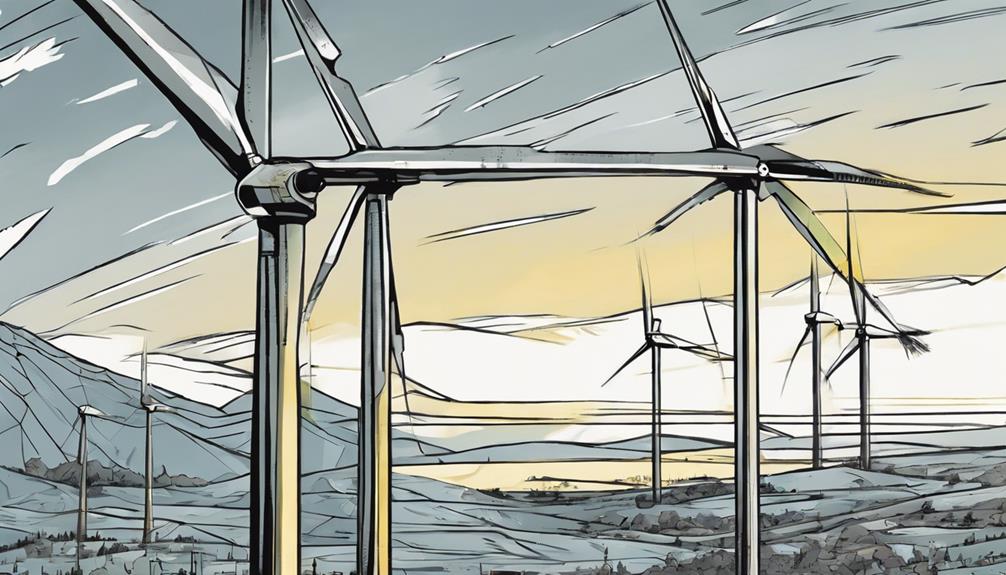
The weight of wind turbine blades plays a vital role in various aspects of wind energy production and infrastructure development. The weight of a wind turbine blade, typically around 35 tons, has a significant impact on transportation, installation, and structural considerations in wind farm development.
Heavier blades pose challenges during transportation and installation, requiring specialized equipment and meticulous logistical planning. As the blade weight increases, so do the complexities and costs associated with these processes. Advancements in materials and design focus on reducing blade weight while ensuring structural integrity and aerodynamic efficiency are maintained.
The importance of blade weight extends beyond mere physical considerations; it directly influences the overall cost of the wind turbine system. Factors such as manufacturing, transportation, and installation expenses are influenced by the weight of wind turbine blades. Hence, optimizing blade weight is essential for enhancing the efficiency and cost-effectiveness of wind energy projects.
Factors Affecting Blade Weight
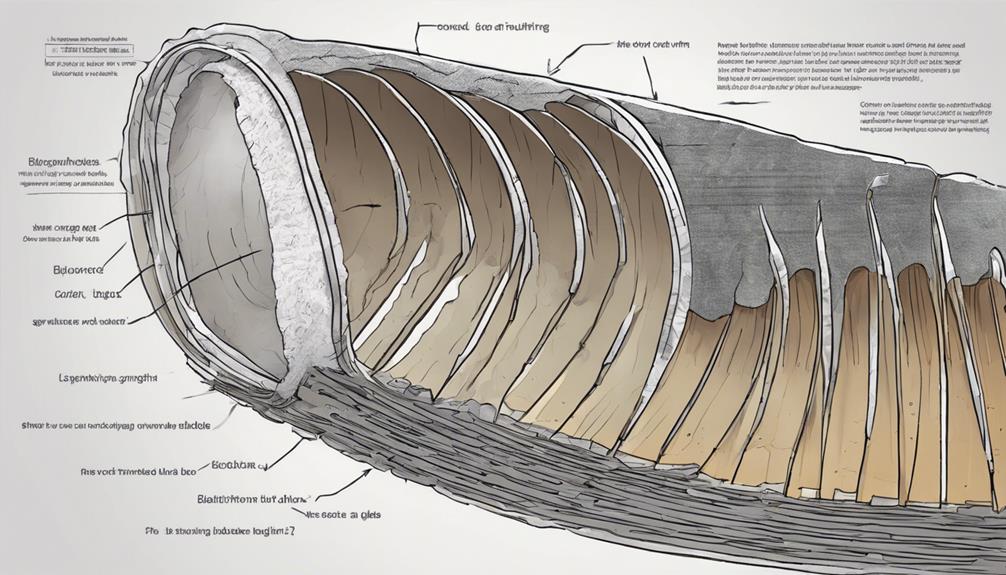
Factors impacting the weight of wind turbine blades include blade length, material composition, and design considerations. Longer blades tend to be heavier as they require more material to maintain their structural integrity. The material composition of blades, such as fiberglass, carbon fiber, and epoxy resin, plays a significant role in determining their weight. Advanced composite blades are specifically engineered to balance strength, flexibility, and weight in wind turbine blade construction.
| Factor | Description | Impact |
|---|---|---|
| Blade Length | Longer blades require more material to maintain structural integrity | Increases weight |
| Material Composition | Materials like fiberglass, carbon fiber, and epoxy resin impact blade weight | Determines overall weight of the blades |
| Design Considerations | Advanced composite materials are chosen to balance strength and weight | Optimize strength, flexibility, and weight balance |
Understanding these factors is essential in designing efficient wind turbine blades that can harness wind energy effectively.
Impact of Blade Weight on Performance
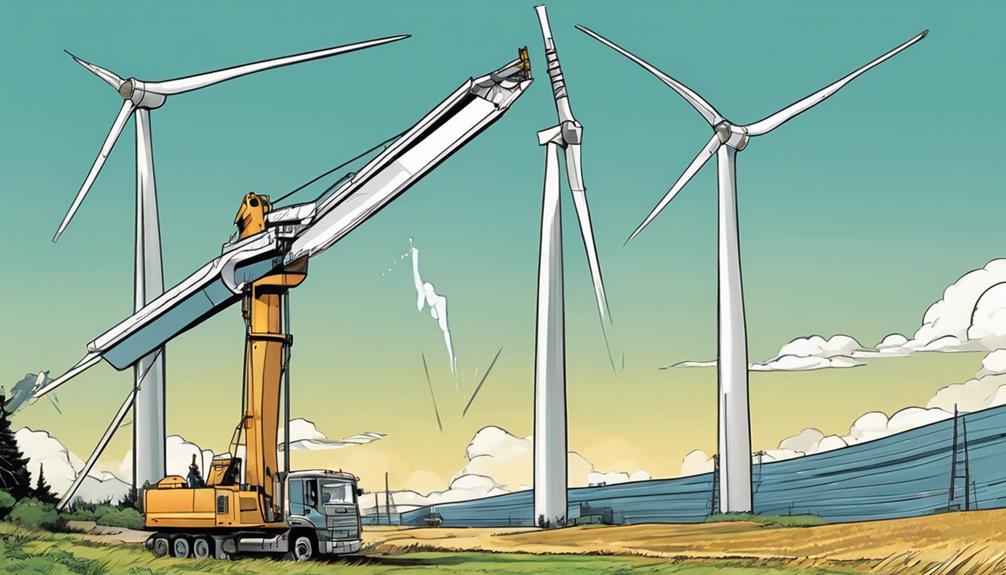
The weight of wind turbine blades greatly influences the efficiency and performance of the entire system. Lighter blades can enhance aerodynamic properties, leading to increased energy production and cost-effectiveness.
Conversely, heavier blades may require more robust infrastructure but could potentially offer greater durability and stability in harsh conditions.
Weight's Effect on Efficiency
Considering the weight of wind turbine blades, their impact on performance becomes clear. The weight of a blade plays a pivotal role in the efficiency of a wind turbine. Heavier blades necessitate stronger winds to initiate rotation, affecting overall energy generation. Conversely, lighter blades can start rotating at lower wind speeds, enhancing the turbine's productivity. Designers must find a balance between blade weight, strength, and aerodynamics to optimize efficiency and longevity. The use of advanced materials and construction methods aids in reducing blade weight while maintaining structural integrity.
| Lighter Blades | Heavier Blades | Optimum Weight |
|---|---|---|
| Start at lower wind speeds | Require stronger winds to rotate | Balance strength and aerodynamics |
| Improve energy production | Affect overall turbine performance | Enhance efficiency and durability |
| Use advanced materials | Risk of blade failures | Achieve peak performance |
Performance and Blade Weight
When analyzing wind turbine performance, the influence of blade weight becomes an essential factor in determining efficiency and power output. Blades made of advanced materials are designed to balance strength and weight to enhance overall performance.
The weight of rotor blades directly impacts the rotational speed of the turbine. Heavier blades require more energy to rotate, affecting the turbine's ability to capture wind energy efficiently.
Additionally, the distribution of blade weight plays a pivotal role in maintaining the stability and balance of the turbine during operation.
To address these challenges, engineers continuously innovate in blade design to optimize performance while managing the impact of blade weight on wind turbine efficiency.
Transportation Challenges for Heavy Blades
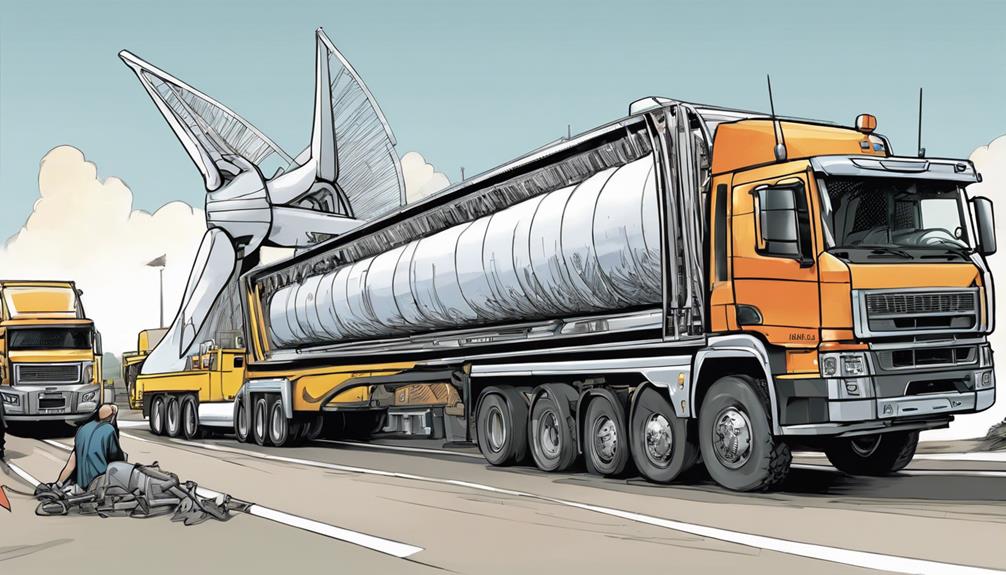
You face significant transportation constraints when dealing with heavy wind turbine blades, including weight distribution challenges and complex handling logistics.
Specialized equipment like oversized trailers is required to transport these massive components, often requiring road closures, permits, and coordination with local authorities.
Solutions must be carefully planned to guarantee safe and efficient transportation of these heavy blades to their installation sites.
Transportation Constraints
Transporting heavy wind turbine blades presents significant challenges due to their immense weight, requiring specialized equipment like oversized trailers and cranes. The transportation constraints associated with wind turbine blades weighing up to 35 tons necessitate careful planning and coordination.
Roads and bridges along the transportation route must be structurally sound to support the weight of these oversized components. Additionally, planning routes and obtaining permits are essential steps in ensuring the safe and efficient transport of heavy blades.
The use of oversized trailers and cranes is crucial for loading and unloading these massive components securely. Adherence to safety regulations during transportation is paramount to mitigate any potential risks that may arise due to the size and weight of wind turbine blades.
To overcome transportation constraints through meticulous planning and the use of specialized equipment is essential for the successful delivery of heavy wind turbine blades to their intended locations.
Weight Distribution Challenges
Effective weight positioning is vital when transporting heavy wind turbine blades due to the challenges posed by their immense weight. The weight arrangement of wind turbine blades is a crucial element in securing safe transportation. The immense size and weight of these blades require specialized equipment and careful planning to prevent any damage during transit.
Strategic placement of the blades on the transportation vehicle is essential to maintain balance and stability throughout the journey. Without proper weight distribution, the blades may shift during transportation, leading to potential accidents or damage to the blades themselves.
Handling the weight distribution of wind turbine blades demands expertise and precision to guarantee their safe delivery to their destination. Implementing effective weight positioning strategies is paramount when dealing with oversized and heavy wind turbine blades to ensure a smooth and secure transportation process.
Handling Logistics Solutions
Specialized heavy-duty trucks and trailers play an important role in addressing the transportation challenges posed by the weight of wind turbine blades. When it comes to handling logistics for heavy blades, meticulous planning is key to ensure secure and efficient transportation. This involves careful route selection to navigate road restrictions and safeguard the safety of other road users.
| Logistics Challenges | Solutions |
|---|---|
| Heavy Weight | Specialized Trucks and Trailers |
| Road Restrictions | Route Planning and Coordination |
| Permits and Escorts | Coordination with Local Authorities |
| Crane Services | Loading and Unloading Assistance |
| Safety Regulations | Adherence to Safety Protocols |
Transporting wind turbine blades may necessitate permits, escorts, and coordination with local authorities to facilitate smooth transportation. Additionally, the use of crane services is often required to load and unload these heavy blades at wind farm sites. By overcoming these logistical challenges, the wind energy industry can effectively harness the power of wind turbines to generate sustainable energy.
Sustainable Disposal Solutions
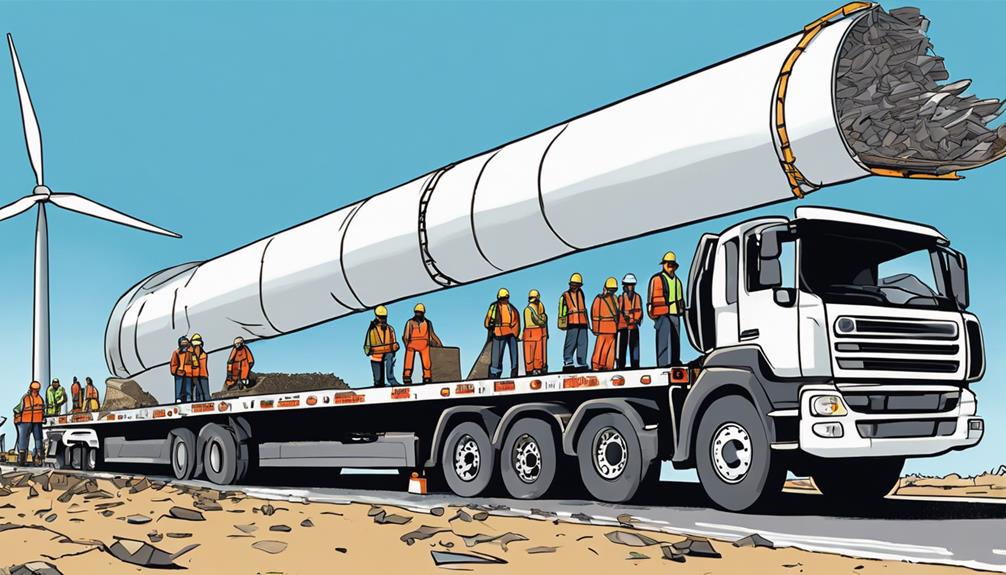
Considering the environmental impact of wind turbine blade disposal, sustainable solutions are crucial for addressing the challenges posed by their size and material composition.
The disposal of wind turbine blades, due to their large size and composite materials, has been a growing concern. In 2019, approximately 1,500 wind turbine blades were disposed of at the Casper Landfill, highlighting the need for sustainable disposal methods.
Research into blade recycling has been ongoing for over a decade, aiming to find environmentally friendly solutions for these massive structures.
While existing turbine blades can be recycled, reuse options are limited due to the composite materials used in their construction. However, advancements are being made, and fully recyclable blades are expected to be utilized in new turbines within the next decade to minimize environmental impact.
Blades are currently disposed of in landfills designated for construction and demolition waste, following strict regulations to guarantee proper disposal. Sustainable disposal solutions are crucial for mitigating the environmental footprint of wind turbine blades.
Future Trends in Blade Weight
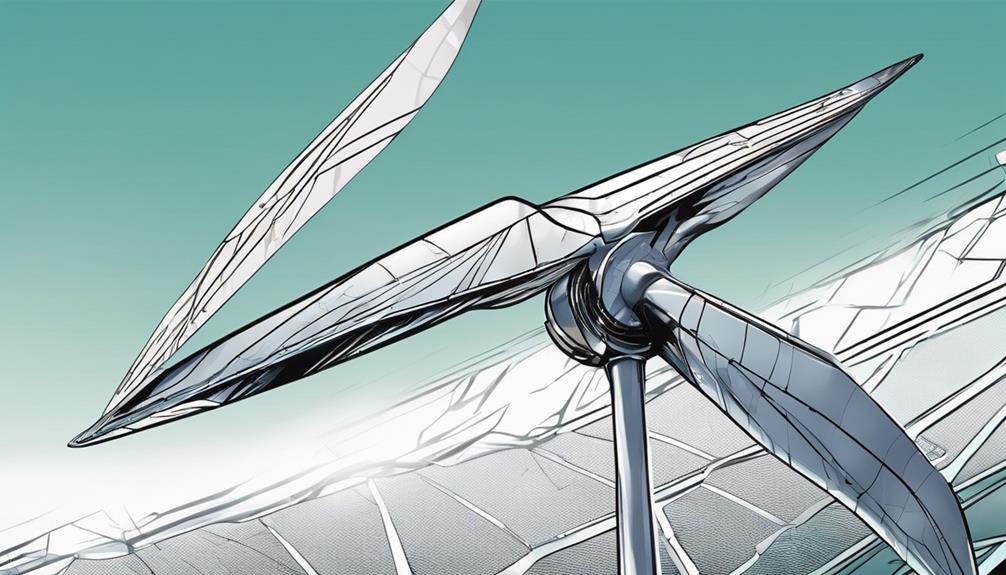
Wind turbine blades are evolving to become larger and heavier to enhance energy capture and generation efficiency. The trend towards larger turbines is driven by the need for higher power output and increased energy production from wind farms.
To support the construction of these larger turbines, new materials and manufacturing techniques are being employed to create longer and heavier blades. This shift towards heavier blades reflects the industry's focus on optimizing turbine performance and maximizing energy yield.
Innovations in Lightweight Blade Design
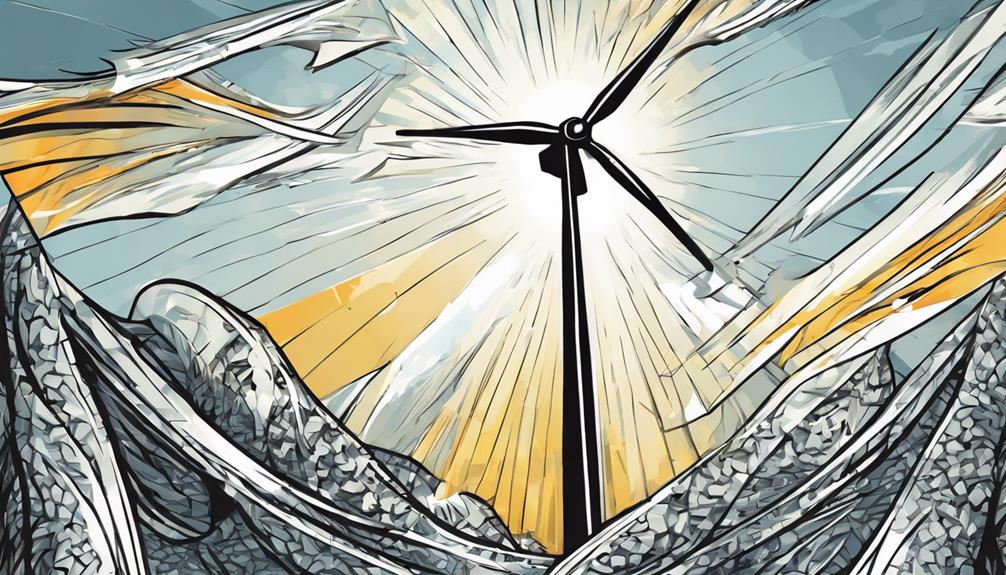
Utilizing advanced materials and cutting-edge design techniques, engineers are constantly exploring ways to create lightweight wind turbine blades. Innovations in blade design and materials play an essential role in achieving this goal. By incorporating materials such as fiberglass, carbon fiber, and composites, the weight of wind turbine blades can be markedly reduced while maintaining the necessary strength. These lightweight blade designs not only enhance energy efficiency but also facilitate easier transportation and installation processes.
The focus on reducing the weight of wind turbine blades is driven by the desire to improve overall performance and longevity of wind turbines. Through ongoing research and development efforts, new materials and construction techniques are continuously being investigated to further decrease the weight of these essential components. By pushing the boundaries of traditional design practices, engineers aim to create more efficient and durable wind turbine blades that can withstand the demands of renewable energy generation.
Optimizing Blade Weight for Efficiency
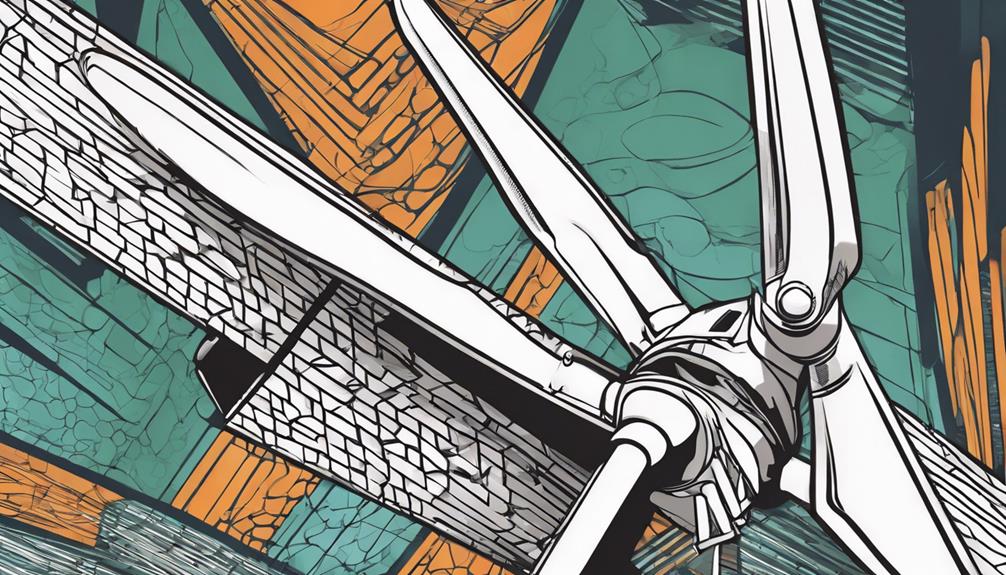
To enhance wind turbine performance, fine-tuning blade weight for efficiency is a key focus for engineers and manufacturers alike. The weight of wind turbine blades, typically around 35 tons, plays a pivotal role in the overall aerodynamic efficiency and energy production of the turbine. By strategically reducing blade weight, engineers aim to strike a balance between structural integrity and aerodynamic performance.
Lighter blades require lower wind speeds to generate power, leading to increased energy production. Conversely, heavier blades may necessitate stronger support structures, elevating installation and maintenance costs. As a result, the quest for the best blade weight isn't just about reducing mass but also about maximizing aerodynamic efficiency while ensuring durability and reliability.
Manufacturers are continuously pushing the boundaries of innovation to develop lighter yet robust blades that can withstand the rigors of wind turbine operations. By adjusting the weight of the blades, engineers seek to amplify the efficiency and output of wind turbines, contributing to a more sustainable energy landscape.
Frequently Asked Questions
How Many Tons Is a Windmill Blade?
A windmill blade typically weighs around 35 tons, varying based on size and design. Materials like fiberglass and carbon fiber make them lightweight yet strong. Their weight is essential for turbine stability, requiring careful engineering and transport.
How Much Does One Blade on a Wind Turbine Cost?
Wind turbine blades can cost from $100,000 to $500,000, depending on size and manufacturer. Larger blades for high-capacity turbines are pricier. On average, a blade can make up about 20% of a turbine's cost.
What Is the Average Cost of a Wind Turbine Blade?
You'll be surprised by the average cost of a wind turbine blade! Prices vary from roughly $73,600 for smaller ones to a whopping $500,000 for larger blades. Factors like size, materials, and manufacturing processes influence these costs.
What Is the Lifespan of a Wind Turbine Blade?
The lifespan of a wind turbine blade typically ranges from 20 to 25 years. Proper maintenance and inspections can help prolong it. Environmental factors, design, and material quality influence longevity. Innovations in materials and manufacturing contribute to longer-lasting blades.
What Is the Connection Between Wind Turbine Blades and Gearbox Energy?
Wind turbine blades are designed to harness the energy in wind, converting it into rotational motion. This motion is then transferred to the gearbox, where the energy in wind turbine gearbox is further converted into electrical energy. The gearbox plays a crucial role in optimizing the energy output of the entire wind turbine system.
Conclusion
So, next time you see a wind turbine blade soaring through the sky, remember that it's not just a lightweight piece of equipment. It carries the weight of innovation, efficiency, and sustainability.
Just like a butterfly effortlessly gliding in the wind, these blades are carefully designed to harness the power of nature.
Embrace the beauty and complexity of these blades, knowing that they're key players in the renewable energy revolution.
